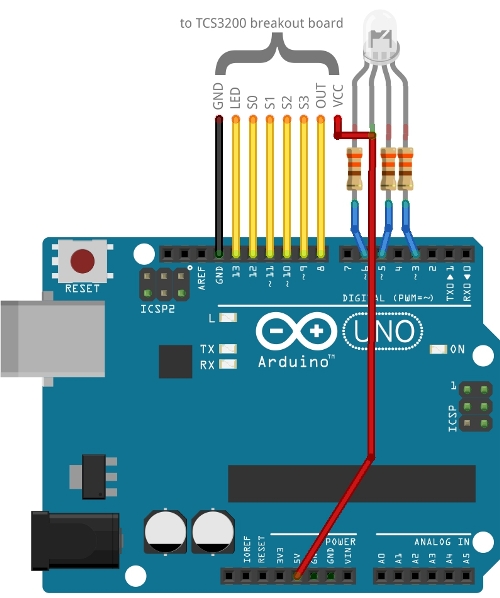Robot Chameleon
Today my daughter and me continued to study our animal encyclopedia. We found the chameleon. I tried to explain her that some species adjust their colors for camouflage in accordance with the vision, but she did not understand, so I built a simple robot chameleon during her afternoon nap.
Schematic

Materials
- Arduino Uno or Mega
- Arduino prototype shield
- Male pin headers
- RGB LED
- 3 x resistor 330R
- GY-31 (TCS3200 breakout board)
- 20cm Ribbon cable (8 wires)
- Heat shrink tube
- Ping pong ball
- Two-component putty for the tail and head of the chameleon
- Tin solder
Tools
- Soldering iron
- End-cutting pliers & scissors
- Battery drill (5mm drill)
- Cigarette lighter
- Waterproof markers for the paint of the chameleon
Code
See attachment
Future ideas
- Add temperature sensor to adjust color
- Add capacitive touch sensor to adjust color
My daughter is very excited about the little robot chameleon and played a long time with it. She does now understand that some chameleons adjust their colors for camouflage in accordance with the vision and she learned some names of colors in different languages (German and English).
Adjusts colors for camouflage in accordance with vision
- Actuators / output devices: RGB LED
- Control method: autonomous
- CPU: Arduino UNO or MEGA
- Operating system: Windows 7
- Power source: USB
- Programming language: Arduino C
- Sensors / input devices: TCS3200 color sensor
- Target environment: indoors


